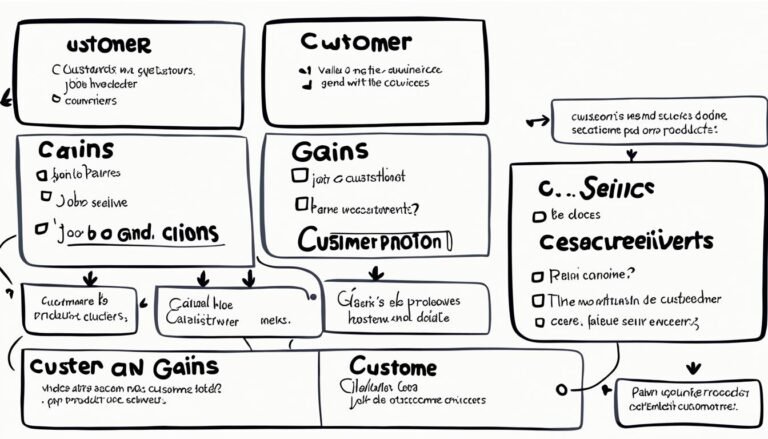The Psychology of Persuasion: Influence and Compliance
In today’s complex world, knowing how to persuade others is key. But what makes us sway to certain words or actions? Let’s dive into the psychology of persuasion with Dr. Robert Cialdini’s groundbreaking insights. He shares secrets to better communication that’s both effective and ethical.
Key Takeaways
- Discover the six principles of persuasion that drive human decision-making and behavior.
- Understand the role of cognitive biases in shaping our perceptions and responses to persuasive messages.
- Explore the power of social proof and its influence on compliance and influence.
- Learn how to harness the principles of reciprocity and commitment and consistency to become a more effective communicator.
- Uncover the ethical considerations of persuasive tactics and how to wield influence responsibly.
Understanding the Principles of Influence
Renowned psychologist Robert B. Cialdini wrote “The Psychology of Persuasion: Influence and Compliance.” He found key principles that help us understand how people can be persuaded. The Reciprocity Principle and the Commitment and Consistency Principle are two powerful ones.
Reciprocity Principle
The Reciprocity Principle says people feel they must return favors or gifts they receive. Marketers use this by giving small gifts first. This makes people feel they owe something back. For instance, the Hare Krishna/ISKCON society gave free gifts to donors to encourage more donations.
Commitment and Consistency Principle
This principle shows we want to act like our past actions and how we see ourselves. Persuaders use this by getting people to make small public promises. These promises then influence their future choices. Cialdini’s experiments, like the beach scenario, prove how effective this can be.
By using Reciprocity and Commitment and Consistency, those who want to persuade can change people’s minds and actions.
“Consistency is a source of strength for the individual, but it can also be a source of rigidity and limitation. The person who changes his or her views with every shifting wind of public opinion is admired by no one. But the person who sticks stubbornly and unreasonably to the very same views regardless of changing circumstances is equally admired by few.” – Robert B. Cialdini
The Power of Social Proof
In the world of persuasive communication and influence, social proof is a key idea. Robert Cialdini, from his book “Influence: The Psychology of Persuasion,” says people often look at others to help make decisions when they’re unsure.
Marketers use social proof a lot. They show testimonials, how many people use something, and even fake laughter. This makes people more likely to do what others do. It’s because we all want to fit in and get approval from others.
“The book emphasizes the impact of social proof on decision-making, stating that people are more likely to be persuaded by the actions of others than any provided social proof.”
Social proof makes things seem more right and popular. Cialdini’s studies show that seeing others do something makes us more likely to do it too. We think it’s the right thing to do.
Using social proof helps people feel like they belong and want approval from others. Things like testimonials and user numbers work well. This method is very effective in making people agree and follow along.
The Psychology of Persuasion: Influence and Compliance
Cognitive Biases and Persuasive Communication
Persuasion is more than just using words. It involves understanding our mental shortcuts, or cognitive biases. These biases affect how we make decisions. Smart communicators use these biases to sway people.
The Contrast Principle shows how we see bigger differences between two things when they are right next to each other. This can make a cheaper product seem better by showing a pricier option first. The Authority Bias makes us trust experts more, even if their reasons aren’t strong.
The Authority Bias
The Authority Bias is a strong tool for persuaders. We often trust experts more, even if their arguments aren’t fully supported. Influential people use this to change opinions and get people to agree, even without solid proof.
Knowing how cognitive biases work in persuasion is key for influencing others. It’s important in business, politics, or personal talks. By using these biases, communicators can make their messages hit home harder and get better results.
“Influence is the ability to affect the thoughts, behaviors, and actions of others without using force or coercion.”
Ethical Influence and the Scarcity Mindset
Exploring the psychology of persuasion shows us how important ethical influence and the Scarcity Mindset are. Dr. Robert Cialdini says that persuasion can be used for good or bad. He urges us to use these principles in a way that respects people’s choices and well-being.
Using the Scarcity Principle ethically is a great way to make people act fast. But, we must use it carefully to keep trust and not harm our relationships in the long run.
Creating a Sense of Urgency
The Scarcity Mindset can be a strong tool in getting people to listen. By showing that something is rare, you make it seem more valuable. This can make people act quickly, fearing they’ll miss out.
But, we must be careful not to lie or deceive. Being honest and clear is key. This way, you can use the Scarcity Mindset without losing your audience’s trust.
“The key is to use the Scarcity Principle ethically, in a way that genuinely serves the needs and interests of your audience, rather than exploiting them for your own gain.”
Remember, Scarcity Mindset, Ethical Influence, and Persuasive Communication work together. By balancing these, you can make real, lasting changes.
Conclusion
This article has given a deep look into the psychology of persuasion, thanks to Dr. Robert Cialdini’s groundbreaking work. We’ve learned about key principles like reciprocity, social proof, and the scarcity mindset. These can be used in a good way to improve how we talk, make decisions, and persuade others.
It’s crucial to understand and use these principles in a way that respects others’ freedom and well-being. By doing so, we can become better at communicating and leading in our personal and work lives. These principles are useful in many situations, from negotiating deals to motivating a team or just connecting with people.
As we wrap up our look at persuasion, the main point is to use these principles wisely while respecting those we want to influence. Building real connections, being open, and putting others first helps us use persuasion for good. This approach leads to positive results and strong relationships.
Source Links
- Influence: The Psychology of Persuasion
- INFLUENCE AT WORK | Dr. Robert Cialdini Influence Training & Keynotes
- Persuasion: Social Influence and Compliance Gaining
- Influence — The Psychology of Persuasion [Book Review]
- Cialdini’s 6 Principles of Persuasion: A Simple Summary – The World of Work Project
- Review of Influence: The Psychology of Persuasion by Robert B. Cialdini
- Influence — The Psychology of Persuasion — A Book Summary
- Influence, New and Expanded: The Psychology of Persuasi…
- Leadership Development and Analysis
- Influence by Robert Cialdini | Book Summary
- Influence, a summary of Cialdini’s Influence principles
- Influence Book Summary by Robert B. Cialdini
- Book Summary – Influence: The Psychology of Persuasion







